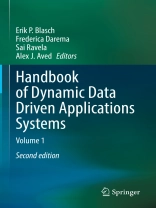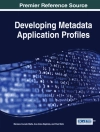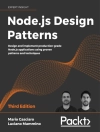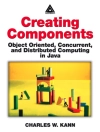The Handbook of Dynamic Data Driven Applications Systems establishes an authoritative reference of DDDAS, pioneered by Dr. Darema and the co-authors for researchers and practitioners developing DDDAS technologies.
Beginning with general concepts and history of the paradigm, the text provides 32 chapters by leading experts in ten application areas to enable an accurate understanding, analysis, and control of complex systems; be they natural, engineered, or societal:
The authors explain how DDDAS unifies the computational and instrumentation aspects of an application system, extends the notion of Smart Computing to span from the high-end to the real-time data acquisition and control, and manages Big Data exploitation with high-dimensional model coordination.
The Dynamically Data Driven Applications Systems (DDDAS) paradigm inspired research regarding the prediction of severe storms. Specifically, the DDDAS concept allows atmospheric observing systems, computer forecast models, and cyberinfrastructure to dynamically configure themselves in optimal ways in direct response to current or anticipated weather conditions. In so doing, all resources are used in an optimal manner to maximize the quality and timeliness of information they provide.
Kelvin Droegemeier, Regents’ Professor of Meteorology at the University of Oklahoma; former Director of the White House Office of Science and Technology Policy
We may well be entering the golden age of data science, as society in general has come to appreciate the possibilities for organizational strategies that harness massive streams of data. The challenges and opportunities are even greater when the data or the underlying system are dynamic – and DDDAS is the time-tested paradigm for realizing this potential.
Sangtae Kim, Distinguished Professor of Mechanical Engineering and Distinguished Professor of Chemical Engineering at Purdue University
Tabela de Conteúdo
1 Introduction to Dynamic Data Driven Applications Systems.- 2 Tractable Non-Gaussian Representation in Dynamic Data Driven Coherent Fluid Mapping.- 3 Dynamic Data-Driven Adaptive Observations in Data Assimilation for Multi-scale Systems.- 4 Dynamic Data-Driven Uncertainty Quantification via Polynomial Chaos for Space Situational Awareness.- 5 Towards Learning Spatio-Temporal Data Stream Relationships for Failure Detection in Avionics.- 6 Markov Modeling of Time Series via Spectral Analysis for Detection of Combustion Instabilities.- 7 Dynamic Space-Time Model for Syndromic Surveillance with Particle Filters and Dirichlet Process.- 8 A Computational Steering Framework for Large-Scale Composite Structures.- 9 Development of Intelligent and Predictive Self-Healing Composite Structures using Dynamic Data-Driven Applications Systems.- 10 Dynamic Data-Driven Approach for Unmanned Aircraft Systems aero-elastic response analysis.- 11 Transforming Wildfire Detection and Prediction using New and Underused Sensor and Data Sources Integrated with Modeling.- 12 Dynamic Data Driven Application Systems for Identification of Biomarkers in DNA Methylation.- 13 Photometric Steropsis for 3D Reconstruction of Space Objects.- 14 Aided Optimal Search: Data-Driven Target Pursuit from On-Demand Delayed Binary Observations.- 15 Optimization of Multi-Target Tracking within a Sensor Network via Information Guided Clustering.- 16 Data-Driven Prediction of Confidence for EVAR in Time-varying Datasets.- 17 DDDAS for Attack Detection and Isolation of Control Systems.- 18 Approximate Local Utility Design for Potential Game Approach to Cooperative Sensor Network Planning.- 19 Dynamic Sensor-Actor Interactions for Path-Planning in a Threat Field.- 20 Energy-Aware Dynamic Data-Driven Distributed Traffic Simulation for Energy and Emissions Reduction.- 21 A Dynamic Data-Driven Optimization Framework for Demand Side Management in Microgrids.- 22 Dynamic Data Driven Partitioning of Smart Grid Using Learning Methods.- 23 Design of a Dynamic Data-Driven System for Multispectral Video Processing.- 24 Light Field Image Compression.- 25 On Compression of Machine-derived Context Sets for Fusion of Multi-model Sensor Data.- 26 Simulation-based Optimization as a Service for Dynamic Data-driven Applications Systems.- 27 Privacy and Security Issues in DDDAS Systems.- 28 Dynamic Data Driven Application Systems (DDDAS) for Multimedia Content Analysis.- 29 Parzen Windows: Simplest Regularization Algorithm.- 30 Multiscale DDDAS Framework for Damage Prediction in Aerospace Composite Structures.- 31 A Dynamic Data-Driven Stochastic State-awareness Framework for the Next Generation of Bio-inspired Fly-by-feel Aerospace Vehicles.- DDDAS: The Way Forward.
Sobre o autor
Erik P. Blasch is a program officer with the Air Force Office of Scientific Research. His focus areas are in multi-domain (space, air, ground) data fusion, target tracking, pattern recognition, and robotics. He has authored 750+ scientific papers, 22 patents, 30 tutorials, and 5 books. His recognitions include the Military Sensing Society Mignogna Leadership in Data Fusion Award, IEEE Aerospace and Electronics Systems Society Mimno Best Magazine Paper Award, and IEEE Russ Bioengineering Award. He was also a founding member of the International Society of Information Fusion (ISIF). His previous appointments include adjunct associate professor at Wright State University, exchange scientist at Defense Research and Development Canada, and officer in the Air Force Research Laboratory. Dr. Blasch is an associate fellow of American Institute of Aeronautics and Astronautics (AIAA), fellow of the Society of Photo-Optical and Instrumentation Engineers (SPIE) and fellow of the Institute of Electrical and Electronics Engineers (IEEE).
Dr. Frederica Darema: retired as Senior Executive Service (SES) member and Director of the Air Force Office of Scientific Research, in Arlington, Virginia, where she led the entire basic research investment for the AF and served as Research Director in the Air Force’s Chief Data Office, and as Associate Deputy Assistant Secretary the Air Force Office for Science, Technology and Engineering. Prior career history includes: research staff positions at the University of Pittsburgh, Brookhaven National Laboratory, and Schlumberger-Doll; and management and executive-level positions at: the T.J.Watson IBM Research Center and the IBM Corporate Strategy Group; the National Science Foundation and the Defense Advanced Research Projects Agency; and Director of the AFOSR Directorate for Information, Math, and Life Sciences. Dr. Darema, Ph D in Nuclear Physics, is a Fellow of the Institute of Electrical and Electronics Engineers (IEEE), among other professional recognitions. She pioneered the DDDAS paradigm and since 2000 has organized and led research initiatives, programs, workshops, conferences, and other forums, to foster and promote DDDAS-based science and technology advances.
Dr. Ravela, Ph.D. 2002, directs the Earth Signals and Systems Group (ESSG) in the Earth Atmospheric and Planetary Sciences (EAPS) department at the Massachusetts Institute of Technology. His primary interests are in statistical pattern recognition, stochastic nonlinear systems, and computational intelligence with application to earth, planets, climate, and life. Dr. Ravela has pioneered dynamic data driven observing systems for wildlife and fluids, the latter with application from the laboratory to localized atmospheric phenomena. He has advanced several DDDAS topics with new methods for application to coherent fluid dynamical regimes. Dr. Ravela proposed and co-organized the Dynamic Data Driven Environmental Systems Science Conference (Dy DESS2014, Cambridge), and then co-organized the first, second, and third general DDDAS conferences (2016 Hartford, 2017 Cambridge, 2020 MIT/Online). Dr. Ravela also teaches Machine Learning with System Dynamics and Optimization, which introduces the informative approach, a key DDDAS concept, to design Learning and Hybrid Stochastic Systems and solve inverse problems and inference.
Alex J. Aved is a senior researcher with the Air Force Research Laboratory, Information Directorate, Rome, NY, USA. His research interests include multimedia databases, stream processing (via CPU, GPU, or coprocessor), and dynamically executing models with feedback loops incorporating measurement and error data to improve the accuracy of the model. He has published over 50 papers and given numerous invited lectures. Previously he was a programmer at the University of Central Florida and database administrator and programmer at Anderson University.












